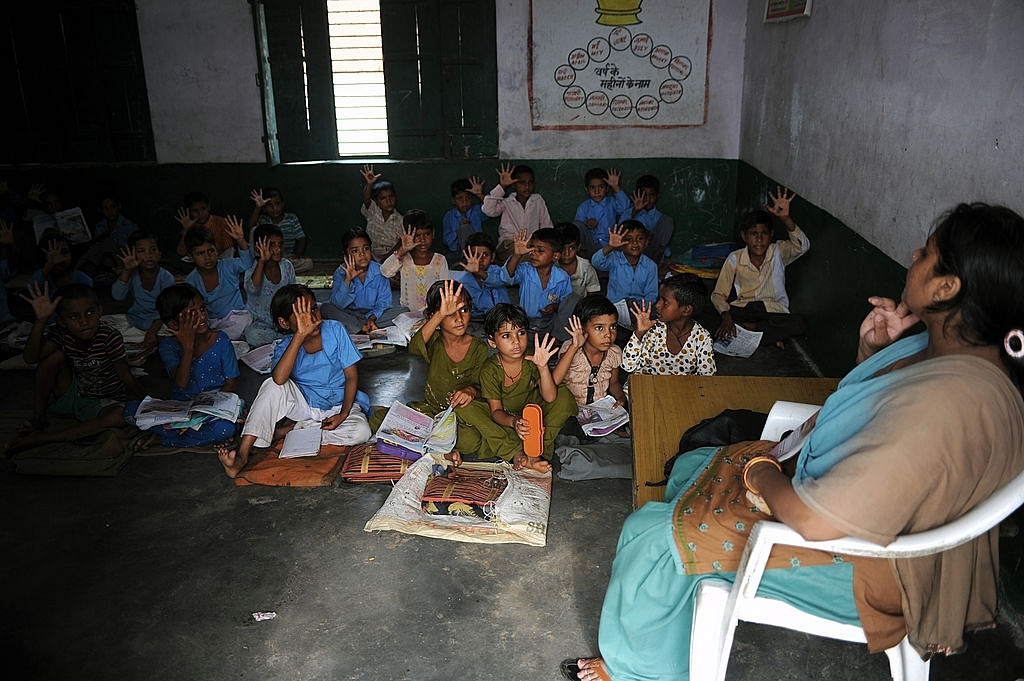Culture
ASER Report On Learning Outcomes Is Out, And The Results Aren’t Pretty
- The ASER report for 2016 is out. Here’s a summary of its findings.

Indian school children read in a classroom at a government school in Bagpath district in Uttar Pradesh. (SAJJAD HUSSAIN/AFP/Getty Images)
Education non-profit Pratham has published its Annual Status of Education Report (ASER) for 2016, and the results don’t look good. There is marginal improvement from 2014, when the previous ASER report was released, but not substantial.
Conducted in rural areas across 589 districts, the survey shows that learning levels -- both reading and arithmetic -- are up in government schools. However, the report notes that this improvement is restricted to lower primary classes, and Class 3 in particular. No change is seen in learning levels in Class 5 while Class 8 has seen a slight decline.
Brief summary of the report
1. The proportion of children who are in Class 3 and able to read at least Class 1-level texts has gone up slightly, from 40.2 per cent in 2014 to 42.5 per cent in 2016. But the good news is that for the first time since 2010, figures for basic arithmetic skills among Class 3 students have gone up. The proportion of Class 3 students who can use simple English words have increased too, from 28.5 per cent in 2009 to 32 per cent in 2016.
2. In the last two years, the proportion of children in Class 5 who can read a Class 2-level text increased by more than five percentage points. However, overall reading levels of Class 5 students have remained the same year-on-year since 2011.
The figure for arithmetic ability has also remained nearly the same, at 26 per cent. The marker for English ability has also barely changed, at 24.5 per cent. Himachal Pradesh, Uttarakhand, Haryana, Maharashtra and Kerala have shown the highest improvement.
3. Reading levels in Class 8 have actually decreased by 1.6 per cent, to 73.1 per cent. The arithmetic-level figures are more disheartening. In 2010, 68 per cent students in Class 8 could perform a three-digit by one-digit division problem. This fell to 44.2 per cent in 2014, and decreased further to 43.3 per cent in 2016.
Even in English reading ability, the proportion of Class 8 students has declined, from 60.2 per cent in 2009 to 45.2 per cent in 2016.
In addition to reading and arithmetic abilities, the survey studied the levels of enrollment and attendance. While enrollment has seen only marginal improvement, attendance in both primary and upper-primary schools has declined.
Facilities in schools have increased since ASER’s last report in 2014. The report has found significant progress in the availability of usable toilets. (68.7 per cent of the schools had toilet facilities that were usable in 2016, compared to 47.2 per cent in 2010). The proportion of schools with girls' toilets (usable) has gone up, from 55.7 per cent in 2014 to 61.9 per cent in 2016. The proportion of schools with libraries, on the other hand, has fallen from 78.1 per cent in 2014 to 75.5 per cent in 2016, but the number of students using these facilities has increased.
You can read the full report here.
Introducing ElectionsHQ + 50 Ground Reports Project
The 2024 elections might seem easy to guess, but there are some important questions that shouldn't be missed.
Do freebies still sway voters? Do people prioritise infrastructure when voting? How will Punjab vote?
The answers to these questions provide great insights into where we, as a country, are headed in the years to come.
Swarajya is starting a project with an aim to do 50 solid ground stories and a smart commentary service on WhatsApp, a one-of-a-kind. We'd love your support during this election season.
Click below to contribute.
Latest